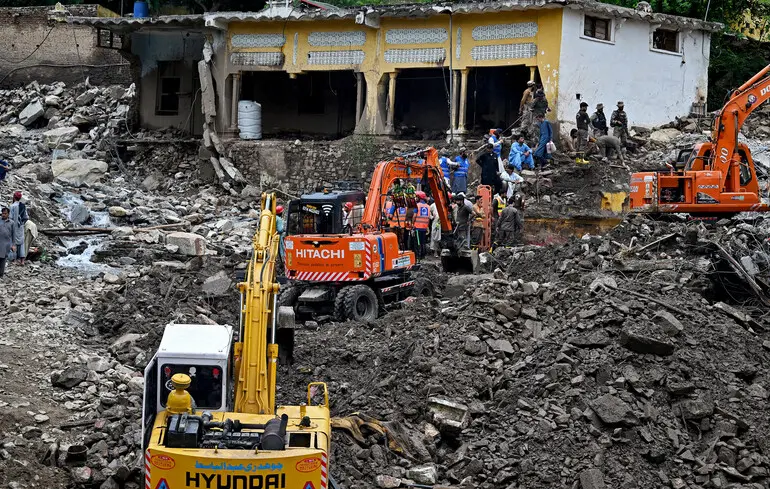Over 350 People Dead and Thousands Evacuated Amid Devastating Floods in Pakistan

Following relentless and destructive floods caused by heavy rains sweeping through Pakistan, the country has already reported over 350 fatalities.
The hardest-hit region is Khyber Pakhtunkhwa province, where rescue operations are ongoing as authorities struggle to manage the disaster’s aftermath.
According to official sources, the death toll has reached 358, including 287 men, 41 women, and 30 children.
The district of Buner suffered the highest losses, with 225 deaths and over 120 people injured.
More than 430 houses have been completely destroyed, and hundreds others partially damaged.
Thousands of rescue workers and volunteers are on the ground, utilizing heavy machinery such as excavators and fire trucks to clear debris, find missing persons, and evacuate those affected.
The local government has set up tent camps, delivering blankets, medications, generators, and essential supplies to assist the victims.
The severe weather has caused infrastructure collapse: roads, bridges, and power lines have been washed away, leaving many communities without electricity or communication.
Unseasonal heavy rainfall — over 150mm in some areas — complicates rescue and recovery efforts.
The government has declared a national mourning day, and international organizations have expressed readiness to provide humanitarian aid, including medical supplies and food.
According to Pakistan’s National Disaster Management Authority, more than 690 fatalities have been recorded since the onset of the monsoon season, with ongoing weather conditions making rescue efforts more challenging.
In one case, five rescue personnel died in a helicopter crash during a mission.
Similar devastating floods are happening in China, where at least 30 lives have been lost, and thousands evacuated.
Experts link these extreme weather events to climate change and water management issues.
In neighboring South Asian regions, such as Indian Kashmir, sudden floods caused by intense rains have resulted in at least 56 deaths and hundreds of missing persons.
Infrastructure was severely damaged, with roads, community facilities, and vital services washed away or rendered inoperable.

